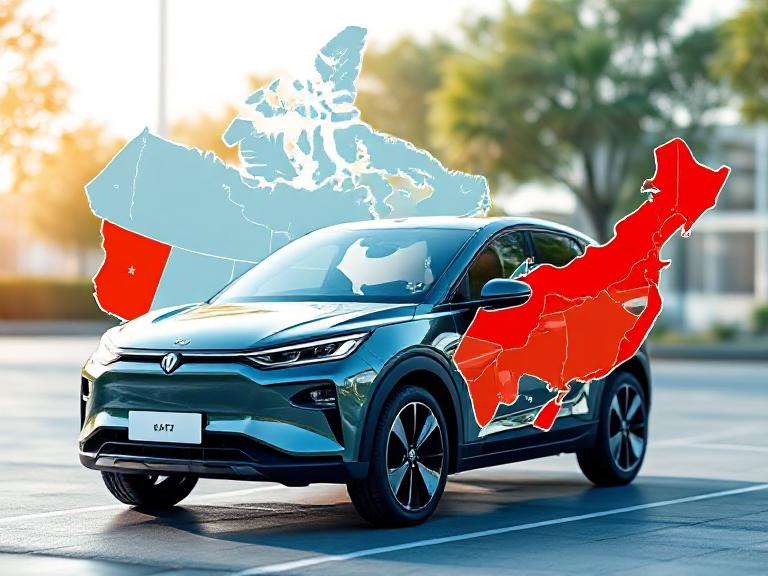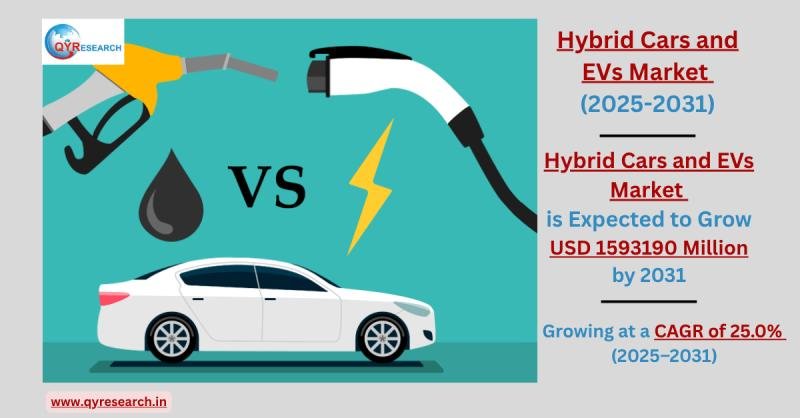Home
»
TRAVEL NEWS
»
United States, Canada, United Kingdom, Germany, China, Japan and More Drive Rapid Expansion of Electric Vehicle Market, Projected to Reach USD Twenty-Nine Trillion by 2034: You Need to Know
Thursday, July 24, 2025

The world is seeing an extraordinary boom in demand for electric vehicles (EVs), with regional players in the U.S., Canada, the U.K., Germany, China and Japan all emerging as industry leaders. In these countries with penetration rates dwarfing the rest of the world, the fruits of advanced technology, government encouragement and consumer momentum are combining in a way that is driving the markets at breakneck speed. In the recent published report, Reports and Data has provided a unique insight into the global Commercial High-Speed Hybrid Ovens Market for the forecasted period of 8-years (2020-2027). This expansion is driven by the growing interest in electric vehicles, led by stringer environmental regulations, advancements in technology and a rising recognition of the benefits of cleaner mobility. With governments promoting greener policies, automakers adopting electrification and consumers willing to pay a premium for sustainability, the market is about to take off around the world.
The global Electric Vehicles (EV) market is entering a phase of remarkable transformation, propelled by shifting consumer preferences, technological innovations, and the strategic maneuvers of leading industry players. A comprehensive market research report by For Insights Consultancy highlights key insights, growth projections, and strategic intelligence, enabling businesses, investors, and analysts to navigate the competitive landscape with confidence.
According to the latest data, the global EV market is projected to experience an exceptional growth trajectory, expanding from USD 2,074.83 Billion in 2025 to USD 29,233.49 Billion by 2034. This rapid expansion signifies a compound annual growth rate (CAGR) of 34.89% over the forecast period, underscoring the accelerating shift towards electric mobility.
Key Market Trends
The electric vehicle sector is witnessing significant changes driven by technological advancements, including battery innovations, electrification of powertrains, and integration of autonomous technologies. The demand for electric vehicles is being fueled by environmental concerns, government regulations promoting eco-friendly alternatives, and the rising availability of charging infrastructure.
Competitive Landscape
Several prominent players dominate the global electric vehicle market, driving advancements in EV technologies and maintaining competitive advantages through continuous innovation. Notable manufacturers include:
- Analog Devices Inc.
- Denso Corporation
- Amphenol Advanced Sensors
- Infineon Technologies AG
- Allegro MicroSystems, LLC
- AMS Osram AG
- Kohshin Electric Corporation
- LEM
- Renesas Electronics Corporation
- Sensata Technologies
- STMicroelectronics
- Melexis
- Texas Instruments Incorporated
- Vishay Intertechnology, Inc
- NXP Semiconductors NV
These companies are at the forefront of EV-related technologies, including sensors, power management, and electric powertrain systems. Their products play a vital role in the performance, efficiency, and safety of electric vehicles.
Market Segmentation
The electric vehicle market can be divided into segments according to vehicle category and propulsion system:
By Vehicle Type:
- Passenger Cars: This segment is expected to dominate the market, driven by the increasing adoption of EVs by individual consumers. Passenger cars are becoming more affordable and practical with technological advancements in batteries and vehicle design.
- Commercial Vehicles: Commercial electric vehicles, including buses, trucks, and delivery vans, are witnessing substantial growth. This shift is driven by environmental policies and the desire for businesses to reduce operational costs and emissions.
By Propulsion Type:
- Temperature Sensors: These sensors are crucial for monitoring and maintaining optimal battery performance and preventing overheating.
- Current Sensors: Used to measure the flow of electricity through the battery, these sensors help ensure the efficiency and safety of EV power systems.
- Position Sensors: Essential for precise control of the motor and powertrain systems, ensuring that electric vehicles perform at their best.
- Pressure Sensors: These sensors monitor and regulate tire pressure, fluid levels, and other key parameters, contributing to vehicle performance and safety.
- Speed Sensors: Speed sensors are critical for maintaining vehicle speed within optimal ranges, improving driving experience and safety.
Regional Outlook
The global EV market is geographically diverse, with significant growth opportunities across four key regions:
- North America (United States and Canada): North America has been a pioneer in adopting electric vehicles, particularly in the U.S., which is home to major EV manufacturers like Tesla. Government policies, tax incentives, and increasing awareness about climate change have spurred demand for EVs.
- Europe (United Kingdom, Germany, France, Italy, Spain, and Rest of Europe): Europe continues to be a leading region for electric vehicles, with strict emissions regulations and strong governmental support for green technologies. Nations such as Norway, the Netherlands, and Germany are at the forefront of electric vehicle adoption.
3.Asia-Pacific (India, China, Japan, and Other Asia-Pacific Nations): The Asia-Pacific region leads the world in electric vehicle adoption, with China holding a central role as the dominant force in the market. The Chinese government’s push for EV adoption, combined with the country’s strong manufacturing capabilities, has made it a global leader in electric mobility.
- Rest of the World (Latin America and Middle East and Africa): While EV adoption in these regions is still in its infancy, governments are increasingly focusing on sustainability and clean energy initiatives, which are expected to accelerate the adoption of electric vehicles in the coming years.
Growth Drivers
Several factors are contributing to the exponential growth of the electric vehicle market:
- Government Incentives and Policies: Governments across the globe are offering tax rebates, subsidies, and incentives to encourage the adoption of electric vehicles, making EVs more affordable and attractive to consumers.
- Environmental Concerns: The growing awareness of the environmental impact of traditional internal combustion engine vehicles is prompting consumers and businesses to shift towards electric vehicles as a greener alternative.
- Technological Advancements: Innovations in battery technology, vehicle performance, and charging infrastructure are making electric vehicles more reliable, efficient, and affordable for the average consumer.
- Changing Consumer Preferences: As consumers seek more sustainable and cost-effective alternatives to gasoline-powered vehicles, electric vehicles are gaining popularity due to their lower operating costs, quiet operation, and reduced emissions.
Future Outlook
The electric car market is set of a period of high growth over the coming decade with more efficient vehicle design, battery and charging faire being developed. With the growing acceptance of electric vehicles among consumers, corporations and municipal organizations, the market for electric mobility vehicles, is set to grow exponentially, providing opportunities for businesses working in the sector.
For companies and investors eager to tap into the burgeoning market for EVs, keeping up with the tech curve, watching for shifts in regulations, and focusing on the right partnerships will be crucial. The battle for control of the EV market is heating up, and those that are able to pivot with more agility in the fast growing space will be the best situated for success.
Download Full Report and TOC:-





